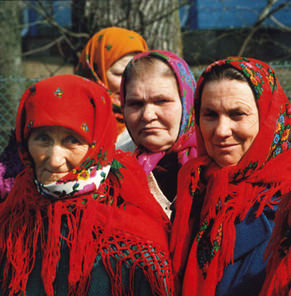Dernières publications
Radiation Monitoring and Health Surveillance at the Service of Improving Living Conditions in Post-Accident Situations: Some Lessons from Chernobyl.
- Détails
- Catégorie : Communications
- Publication : mercredi 27 mai 2015 16:31
LOCHARD J.
Oral Presentation at the 15th International Congress of Radiation Research, Kyoto, Japan, 27 May 2015
Summary
The Ethos Project (1996-2001) and the CORE Programme (2004-2008) implemented in the areas of Belarus contaminated by the Chernobyl accident have demonstrated that the direct involvement of the local stakeholders in the day-to-day management of the radiological situation is feasible and can significantly improve the living conditions of the affected population. To be effective, this involvement must rely on the development of a practical radiological protection culture shared by all affected stakeholders and particularly the relevant professional’s networks that are inherently committed in the rehabilitation process particularly the professionals in charge of radiological monitoring and the healthcare professionals.
The Belarus experience has shown that the development of such a culture is based on two main pillars. First an inclusive radiation monitoring system allowing everyone to interpret results of measurements (ambient levels, external and internal doses, contamination of products), to build her/his own benchmarks against radioactivity in day-to-day life and to make her/his own decisions and protect her/himself and loved ones (self-help protection). In this approach, access to measurements by the people with suitable devices is critical. Secondly a health surveillance strategy responding to the precautionary principle as uncertainties still remain on the potential health consequences of chronic exposures at low doses. It calls for a system based on regular clinical investigations as well as the development of registries to monitor important indices in public health in order to identify any changes in the health status of the population that could occur and to investigate whether these changes could be related to radiation or other factors.
The presentation reviews the main features of the systems developed in the ETHOS Project and the CORE Programme in Belarus for the radiation monitoring and the health surveillance of the affected populations. It also highlights the key lessons learned from these experiences for the management of post-accident situations.
Download A1240

 Le Centre d’étude sur l’Évaluation de la Protection dans le domaine Nucléaire (CEPN) est une association à but non lucratif, fondée en 1976, pour évaluer la protection de l’Homme contre les dangers des rayonnements ionisants, sous ses aspects techniques, sanitaires, économiques et sociaux.
Le Centre d’étude sur l’Évaluation de la Protection dans le domaine Nucléaire (CEPN) est une association à but non lucratif, fondée en 1976, pour évaluer la protection de l’Homme contre les dangers des rayonnements ionisants, sous ses aspects techniques, sanitaires, économiques et sociaux.
